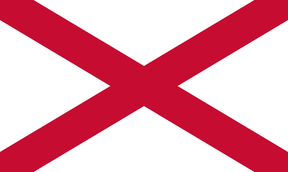 The observant amongst you may have noticed that all this talk about Ireland being under-represented should be a moot point. The country shouldn't be there at all!
The observant amongst you may have noticed that all this talk about Ireland being under-represented should be a moot point. The country shouldn't be there at all!
The Republic of Ireland has not been in the United Kingdom since December 6th 1922. When the nation earned its independence (after a victorious, but devastating war), everyone expected that the St Patrick's Flag would simply be removed.
It wasn't, because the United Kingdom had retained Northern Ireland. This was despite the fact that the Red Hand of Ulster, which is emblematic of that country, is nowhere to be seen on the Union Flag. Instead, the St Patrick's Saltire that is shown is representative of the entire of Ireland.
This caused an immediate issue for the new Republic of Ireland, which found itself unable to use its own national flag.
There have occasionally been questions asked in the Dáil Éireann about this. Ministers have suggested sending diplomatic representation to Westminster, formally requesting that Ireland be removed from the Union Flag. But there's no record of Eire having actually done it.
In reality, there's no need beyond the whole morality of the issue. Eire forged on ahead, as its own nation, under a green, white and orange tricolor that better matched the country's hard-won freedom. It was designed by a group of sympathetic French women in 1848, in early recognition of the fact that Ireland should be free.
It was this tricolor, not the St Patrick's Saltire, which was raised above the General Post Office during the Easter Rising of 1916. It was this which had more meaning to the Irish people.
However, it's still an ominous indication of the real thoughts in Westminster that the saltire of the whole of Ireland was never taken out of the Union Flag.








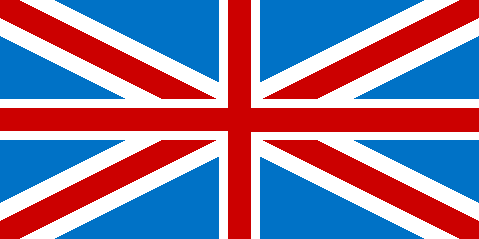



 The observant amongst you may have noticed that all this talk about Ireland being under-represented should be a moot point. The country shouldn't be there at all!
The observant amongst you may have noticed that all this talk about Ireland being under-represented should be a moot point. The country shouldn't be there at all!


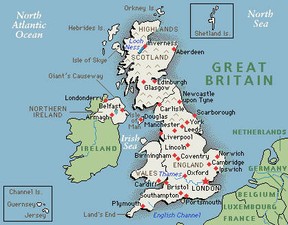 Technically Northern Ireland is shown, as that was the excuse for keeping the St Patrick Saltire in the Union Flag. But only one emblem is going to point to Ulster and that's the Red Hand.
Technically Northern Ireland is shown, as that was the excuse for keeping the St Patrick Saltire in the Union Flag. But only one emblem is going to point to Ulster and that's the Red Hand.


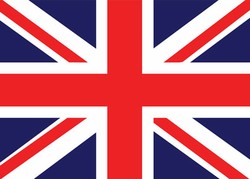

 St Tydecho's Churches in West Waleson 09/03/2014
St Tydecho's Churches in West Waleson 09/03/2014
 Goodies for an Outlander Premiere Partyon 03/06/2015
Goodies for an Outlander Premiere Partyon 03/06/2015
 Holocaust Memorial Day Interview with Rainer Höss, Grandson of Rudolf Architect of Auschwitzon 01/24/2015
Holocaust Memorial Day Interview with Rainer Höss, Grandson of Rudolf Architect of Auschwitzon 01/24/2015
 Romantic Valentine Gifts for an Outlander Fanon 01/16/2015
Romantic Valentine Gifts for an Outlander Fanon 01/16/2015

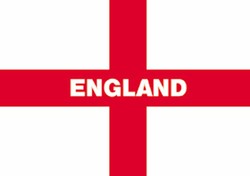
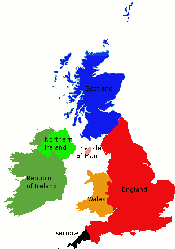
Comments
I was unaware that the cross of St Patrick was developed by the Ascendancy. But Ireland has its own flag now, so justice is done. Realize as well that the traditional flag of England, the Golden Dragon, was ditched by the Normans and is now not used, and as an Englishman with a sense of history I resent this loss. The cross of St George is a crusader symbol nought to do with England, again something imposed by the ruling class without the people's consent.
I think it worth recalling that John Seymour got it right when he aid that the real struggle is not between nations but between people and masters. The ordinary folk of Britain and Ireland have dealt with the differences between their rulers by establishing friendships and marriages between themselves, and that is good.
"St. Patrick's Cross" was a flag totally made up by the British ruling classes in Ireland in the late 1700s. It has never been a traditional symbol of either Ireland or St. Patrick. It represented the, now defunct, Protestant Ascendancy.
I'm the person who wrote this and my academic credentials are very well established.
May I ask which point precisely you challenge? I believe that the evidence is all there.
The person who wrote this would appear not to have even a GCSE in History and most of the commentary is simply anti-English drivel. Hooray for the internet - it's a great tool for 'learning'....
Don't make me invade Kent with my pitchfork, Nick. :p
If you lot hadn't let the Jutes into the country in the first place, us Celts wouldn't have this trouble!
I think the point is that St George killed the Welsh dragon so we can forget that and quite frankly nobody could understand what the Cornish said when asked what were the colours of their flag ;)
You're not alone. I think that half of the UK have no idea what they're waving in the air.
Glad to have been informative. :)
Thanks for writing this! I've always been irked by Cymru and Cornwall being left off the flag, but didn't know about the color differences etc.